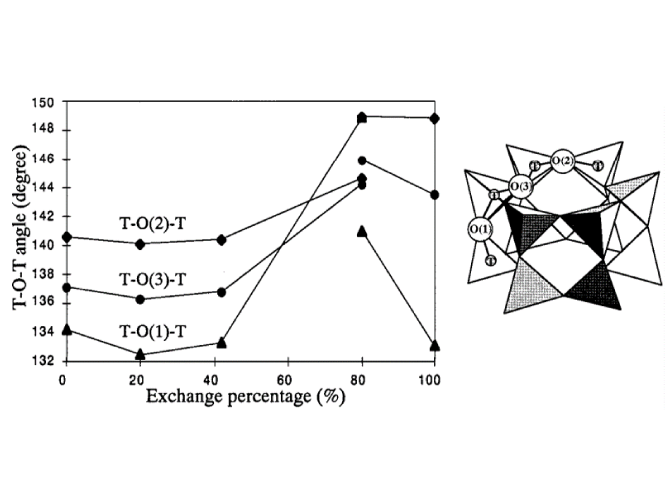"Phase transition upon K+ ion exchange into Na low silica X: Combined NMR and synchrotron X-ray powder diffraction study"
- Authors
Y. Lee, S.W. Carr, J.B. Parise
- Journal
Chemistry of Materials
Vol.10, No.9, pp.2561 – 2570, 1998. 09 - DOI
Abstract
The mechanism by which K+ ions exchange into zeolite Na-low silica X (LSX) (Na96Al96Si96O384·nH2O) has been determined by studying structures of the Na-LSX and K-LSX end members in the Na−K LSX solid solution series as well as samples exchanged at the 20%, 42% and 80% K+ levels. A preliminary investigation using 29Si MAS NMR spectroscopy revealed a two-phase region in the solid solution near 80% K+ exchange. Rietveld analysis of the powder diffraction data collected from hydrated samples showed that, up to 42% of K+ exchange, K+ ions were located preferentially at site I‘, just outside the double 6-ring (D6R) in the sodalite cage, and at site II, above the single 6-ring (S6R) in the supercage. Introduction of K+ ions into site I‘ repositioned Na+ ions into site I, at the center of the D6R. An abrupt change in the cubic lattice parameter from 25.0389(5) to 25.2086(5) Å marked the formation of a second phase at the 80% K+-exchange level as K+ ions began to occupy site I. No coexistence of phases was observed for the fully K+-exchanged sample (a = 25.2486(2) Å), where sites I and II were fully occupied by K+ ions.












